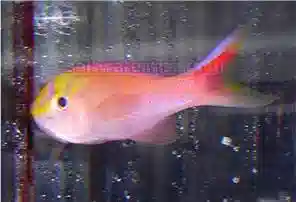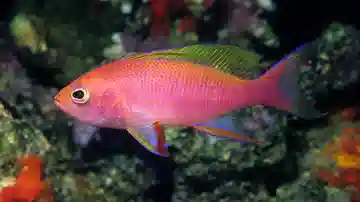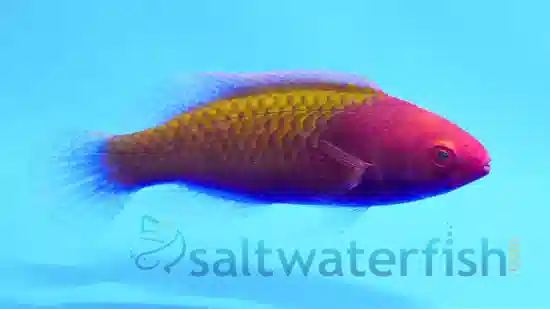Blue Eyed Tang
Ctenochaetus binotatus
(1 Reviews)

Blue Eyed Tang
Ctenochaetus binotatus
(1 Reviews)
{{ item.name }}
Size: {{ item.extra_field_3 }}
${{ getFormattedPrice(item.saleprice) }} ${{ getFormattedPrice(item.price) }}
To join the waiting list, click here
Free Shipping
With
$199.00
or more in Marine Life.
More details...
Blue Eyed Tang Care Facts
| Care Level: | Easy |
|---|---|
| Temperament: | Peaceful |
| Diet: | Omnivore |
| Reef Safe: | Yes |
| Minimum Tank Size: | 120 gallons |
| Max Size: | 8 inches |
Blue Eyed Tang (Ctenochaetus binotatus) Care Guide
The Blue Eyed Tang, scientifically known as Ctenochaetus binotatus, is a captivating and rewarding addition to your saltwater marine aquarium. This care guide provides essential information to ensure the well-being of your Blue Eyed Tang. Topics covered include habitat, reef compatibility, size, lifespan, diet in captivity, aquaculture availability, compatibility with other marine life, sexual dimorphism, juvenile to adult coloration changes, temperament, tank requirements, water conditions, common names, and reasons to purchase the Blue Eyed Tang from Saltwaterfish.com.
Habitat of the Blue Eyed Tang:
The Blue Eyed Tang is naturally found in the clear waters of the Indo-Pacific region and Africa. It prefers reef environments with access to ample algae and detritus. This habitat provides the necessary sustenance for these herbivorous fish.
Reef Compatibility of the Blue Eyed Tang:
The Blue Eyed Tang is generally considered reef safe, thanks to its herbivorous diet. It actively consumes algae and plays a beneficial role in controlling algae growth in your reef tank. However, it's essential to maintain a well-established aquarium with appropriate hiding spots to reduce stress and provide a sense of security.
Size and Lifespan of the Blue Eyed Tang:
Blue Eyed Tangs are moderate in size, typically growing to around 8-10 inches (20-25 cm) in length. With proper care and attention, they can live for a significant lifespan of 5-10 years or even longer, allowing for long-term enjoyment in your aquarium.
Diet in Captivity for the Blue Eyed Tang:
In captivity, Blue Eyed Tangs should be provided with a diet that closely mimics their natural feeding habits. This includes high-quality marine flake or pellet food supplemented with fresh or dried seaweed and spirulina flakes. Offering a variety of food sources ensures they receive the essential nutrients required for their health and vibrant coloration.
Aquaculture and Availability of the Blue Eyed Tang:
Blue Eyed Tangs are not widely available through aquaculture. As such, most specimens are wild-caught. To ensure your tang's health and adaptability, sourcing them from trusted suppliers such as Saltwaterfish.com is recommended. This ensures the fish is well-acclimated to captive conditions and free from the stress associated with newly captured specimens.
Compatibility with Other Fish and Invertebrates for the Blue Eyed Tang:
Blue Eyed Tangs typically exhibit peaceful behavior, making them suitable for community tanks with other marine species. They coexist well with various fish and invertebrates. However, providing ample swimming space and hiding spots is essential to reduce territorial conflicts, which can occur with other tangs or similar species.
Sexual Dimorphism of the Blue Eyed Tang:
These tangs do not exhibit sexual dimorphism, meaning that males and females share similar physical characteristics and coloration.
Juvenile to Adult Coloration Changes of the Blue Eyed Tang:
Juvenile Blue Eyed Tangs often display a vibrant yellow body, bright blue eyepatches, and dark spots on the dorsal fin. As they mature into adults, their coloration changes, with the yellow body developing a slight greenish tint, and the black spots on the dorsal fin may become more pronounced.
Temperament of the Blue Eyed Tang:
The Blue Eyed Tang is known for its peaceful temperament. It tends to get along well with other fish and exhibits minimal aggression toward tank mates, provided they have enough space and hiding spots in the tank.
Tank Requirements for the Blue Eyed Tang:
To ensure the well-being of your Blue Eyed Tang's well-being, maintaining a tank with a minimum size of 120 gallons (approximately 400 liters) is essential. This provides ample swimming space and allows the fish to exhibit its natural behaviors. Maintaining stable water conditions is crucial, with a pH level between 8.1 and 8.4, a salinity level of 1.020-1.025, and a consistent temperature range of 74-82°F (23-28°C). Adequate water flow, a protein skimmer, and regular water changes will help maintain water quality.
Common Names of the Blue Eyed Tang:
The Blue Eyed Tang is also known by other names, including the Two-Spot Bristletooth Tang and the Yelloweye Kole Tang.
Compatible Tank Mates for the Blue Eyed Tang:
When selecting tank mates for your Blue Eyed Tang, consider these five specific species that are less likely to provoke territorial disputes:
- Flame Angelfish (Centropyge loricula)
- Royal Gramma (Gramma loreto)
- Purple Firefish (Nemateleotris decora)
- Yellowtail Damsel (Chrysiptera parasema)
- Orchid Dottyback (Pseudochromis fridmani)
Why Choose the Blue Eyed Tang from Saltwaterfish.com:
The Blue Eyed Tang is an excellent choice for those looking to maintain the health and beauty of their marine aquarium. To ensure your tang's well-being and adaptability, acquiring it from a reputable source like Saltwaterfish.com is advisable. Known for providing high-quality specimens well-acclimated to captivity, sourcing from Saltwaterfish.com reduces the stress on the fish and increases the likelihood of success in your aquarium.
In summary, the Blue Eyed Tang is a beautiful addition for hobbyists who appreciate their marine tank's peaceful, herbivorous, and reef-compatible species. With the right tank conditions, suitable tank mates, and a well-balanced diet, these tangs can contribute to the beauty and maintenance of your underwater ecosystem. They are available through the reputable source of Saltwaterfish.com, ensuring a healthy and thriving addition to your saltwater aquarium.
I bought this fish from saltwaterfish two weeks ago, I live in Ohio and received him via FedEx overnight. I cannot believe how big and healthy this fish is. He's very fat and has amazing coloration, though he looks nothing like the picture as he is mature and dark bodied. I put him in my well established (4years) tank that I also added a puffer at the same time. They are alone in there. He picks at the rocks all day, hid a lot and was skittish the first week. Now he's out and about, seems very happy. I am very, very glad I ordered from this company.
Reviewed by: Sarahsmile on April 22, 2015















